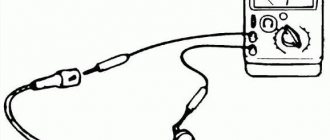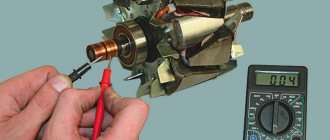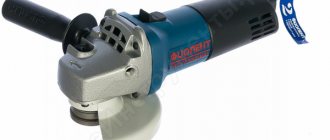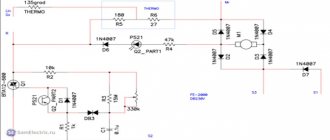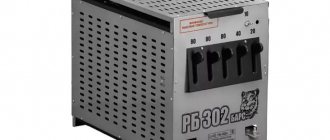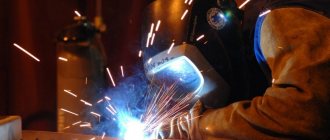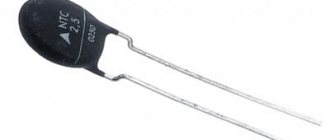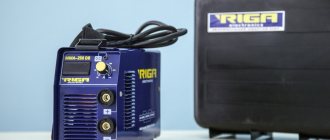Compound
Nichrome contains about 20% nickel and up to 80% chromium.
In addition, the alloy may contain additives in the form of manganese, aluminum, iron, silicon, etc.
The introduction of alloys into the nichrome composition increases the performance indicators and technical parameters of the metal:
- nickel and iron improve machinability;
- iron, titanium, aluminum and manganese reduce resistance to elevated temperatures;
- In the presence of iron in the alloy, nichrome acquires magnetic properties.
Increasing additives can degrade the characteristics of the metal.
The amount of nickel determines the temperature that the heating elements can withstand.
The chromium content in the alloy should be no more than 20%. An increase in the amount of chromium increases the brittleness and impairs the machinability of the metal. When its content in the alloy is more than 30%, cold rolling and drawing of the material becomes impossible.
The strength of the protective film and oxidation resistance depend on the amount of chromium.
Properties of nichrome
The alloy is characterized by good ductility and high electrical resistance. Its value can range from 1100 to 1400 Ohm mm²/m, depending on the type of metal.
Table 1. Technical characteristics of nichrome.
| Options | Indicators |
| Strength | 650-700 MPa |
| Melting temperature | 1100-1400°С |
| Working temperature | 800-1100°С |
| Density | Up to 8200-8500 kg/m3 |
| Resistance | 650-700 MPa |
| Coefficient of thermal conductivity | 11.3 W/(m K) |
| Linear thermal resistance coefficient | 14·10¯⁶Kˉ¹ |
| Ultimate tensile strength | 0.65-0.70 GPa |
Products made from nichrome are easily deformed while maintaining the given shape.
Nichrome does not have magnetic properties, with the exception of an alloy that contains an iron alloy.
Figure 2. Heating element.
Properties of nichrome wire and its application
Among precision alloys subject to large temperature changes, nichrome occupies a special place. Due to its high heat resistance, its use is more justified in the manufacture of heating devices and key components of furnace equipment. The working material in this case is nichrome wire of a certain grade. Each of them differs in the percentage of various alloying additives, which allows, based on design performance indicators, to make a choice in favor of one or another sample, depending on its main quality characteristics, the main of which is the resistance of the nichrome wire.
Nichrome brands
The most common brands in the industry include:
- X20N80 is a classic alloy containing about 20% chromium and 80% nickel;
- X15N60 - the alloy has reduced chromium and nickel content, increased iron content to 25%;
- Kh20N80-N (-N-VI) and Kh15N60 (-N-VI) - alloys produced in vacuum induction furnaces;
- N50K10, X25N20 - grades of nichrome used for work at temperatures up to 900°C.
Alloys produced in vacuum induction furnaces are distinguished by the fact that their electrical resistance changes little with temperature changes.
Explanation of brands:
- X – chromium (Cr);
- N – nickel (Ni);
The numbers indicate the percentage of the composition.
Additional letters mean:
- VI - vacuum induction melting;
- H - category of heating elements;
- C - use in resistance elements;
- Heating element - intended for dry type electric heaters.
For example, the brand X20N73YUM-VI indicates: chromium content - 20%, nickel - 73%, aluminum - 3%, molybdenum - 1.5%, manganese - up to 0.3%, titanium - up to 0.05%, iron - 2 %, carbon - up to 0.05%. The alloy was smelted using the vacuum induction method.
The purpose and properties of nichrome products are determined by the chemical composition of the alloy.
International designations
In the international names of nichrome you can find the following designations:
- Cronix 80;
- NiCr80/20;
- Nichrome V;
- Chromel A;
- HAI-NiCr 80;
- Ni80Cr20;
- Nikrothal 8;
- Resistohm 80;
- euronichrome.
European analogues of ferronichrome: NiCr60/15, Ni60Cr15, ChromelCN6, Nikrothal 6, Nikrothal 60, CroniferII, AlloyC.
"Little tricks". Part 3.
How to extend the life of a soldering iron
Like an incandescent lamp, soldering irons have a spiral - a heating element. As a rule, it burns out when the soldering iron is turned on, less often - when it is turned off. During long (time-consuming) installation work, it is not advisable to turn off the soldering iron, but sometimes it is enough to just limit the heating.
To do this, a button (with fixation) with contacts for closure is inserted into the break in the electrical circuit “network - heating coil”. And in parallel with this button, a rectifier diode of type D226B - D226Zh, KD213 or similar is turned on.
When the button contacts are open (but the plug is plugged in), limited heating of the soldering iron coil occurs. One has only to close the contacts of the button, and the heating goes “in full force”. At the same time, the soldering iron heats up faster, because it was already ready for use. Using this method, it is possible to significantly extend the “life” of the soldering iron!
How to connect high-resistance nichrome wires
A simple method can be used to ensure reliable electrical contact in wires made of high resistance alloys (nichrome, constantan). To do this, the wires at the junction are stripped and twisted. Then such a current is passed through them that the junction becomes red hot. You need to put a piece of lapis in place of the twist. When heated, it will melt and provide reliable electrical contact at the junction.
How to solder contacts made of stainless steel, chrome and nickel
When the material is difficult to solder, you need to use soldering acid or aspirin. In this case, it is necessary to preheat the soldering area until scale appears.
Another method of soldering such metals is a little simpler. It is necessary to thoroughly clean and degrease the soldering area. Then tin and spread with glue like BF-4 (or similar). After this, use the tip of a heated soldering iron to press the surfaces to be soldered for 5-7 seconds. After cooling, apply a drop of instant glue to the soldering area to completely harden the contact.
How to solder aluminum parts
It is not difficult to solder the leads of radio components or the ends of conductors to a copper, brass or steel surface. But try to do this on an aluminum chassis and you will see that the solder will not even stick to its surface. The reason is an oxide film - the result of the combination of aluminum with oxygen in the air. This film prevents the solder from joining the metal.
The oxide film can be removed electrochemically. Stock up on saturated copper sulfate, a 3336 battery (or power supply) and copper wire without enamel insulation. Thoroughly clean the area of the intended soldering of parts or conductors on the aluminum surface and carefully apply 2-3 drops of copper sulfate. Connect a conductor from the negative terminal of the battery (power supply) to the chassis, and connect a piece of copper wire to the positive terminal. Dip the end of the wire into a drop of vitriol on the chassis (the wire should not touch the aluminum). After some time, a layer of red copper will settle on the chassis, to which, after drying, you can solder the leads of the parts.
How to prepare conductive glue
Tsaponlak and graphite from any battery (central rod) are mixed until sour cream is thick, a thin layer is applied. Can be used to restore graphite tracks on remote controls and other similar devices.
Advantages and disadvantages
Nichrome alloys are characterized by high electrical resistance.
The resistivity of nichrome is 10 times higher than that of galvanized steel and 70 times higher than that of copper.
Other advantages include:
- high mechanical strength and hardness;
- heat resistance and absence of temperature deformation;
- low specific gravity and good ductility;
- resistance to corrosion and aggressive environments;
The material is easy to process: sharpening, stamping, welding, etc. It does not change its characteristics when exposed to high temperatures.
Due to its resistance to corrosion and aggressive external environments, the alloy has an almost unlimited service life.
The disadvantages of the material include high cost.
Reducing the percentage of chromium in the alloy makes the product cheaper, but also reduces the technical properties of the material.
Nichrome welding technology
To weld parts of large thickness, the edges are made with a significant bevel and a large bluntness. This is due to the fact that molten nickel alloys have high viscosity, and edge penetration occurs to a shallower depth than that of steels.
Before welding nichrome, the edges and surfaces adjacent to them are thoroughly cleaned mechanically. This is necessary to remove plaque, which contains impurities that negatively affect the quality of the seam.
After mechanical cleaning, the surfaces are degreased with acetone, white spirit or gasoline, and sometimes chemical etching is used.
Making wire and tape from nichrome
Almost all electric stoves and electrical appliances use nichrome wire, thread or tape as heating elements.
There are several ways to make products from nichrome:
- Wire and thread drawing with intermediate heat treatment. Immediately before drawing, wire rod with a diameter of 6-8 mm is heated in special furnaces to a temperature of 1170-1230°C and quickly cooled. The heating temperature of the workpiece depends on the composition of the alloy. The next stage is pickling the wire rod in a mixture of hydrochloric and nitric acid with water.
Nichrome wire drawing is performed using high pressure. The production of products by drawing method is regulated by the requirements of GOST 8803-89
- Drawing of a hot-rolled billet to obtain a nichrome strip. This method allows the output to be a high-quality strip that exactly matches the profile and cross-section of the drawing channel. The resulting tape is of high quality and has no sharp edges.
- Cold drawn broach. The method is used for the production of wire and threads from nichrome. It is carried out without preheating the workpiece. Regulated by GOST 12766.1-90
- Cold rolling. Used for making nichrome tape. Performed in accordance with the requirements of GOST 12766.2-90.
- Flattening - used to produce strips from precision alloys with high electrical resistance. Performed in accordance with GOST 12766.5-90.
Nichrome tape.
The dimensions, mechanical properties and other parameters of nichrome wire are regulated by state standards or technical specifications.
What electrodes are used
When performing manual arc welding of nickel and its existing alloys, it is necessary to use electrodes that are characterized by high-quality coating. The highest quality welded joint is provided by coated electrodes of the “Progress-50” type . Such electrodes are used for welding nickel, as a material having grades N-1, NP-1, NP-2. If we talk about electrodes coated with ENHD-10, they are used for the manufacture of welded joints of parts made of nickel-silicon alloys. Electrodes coated with ENKhM-100 are designed for connecting parts made of nichrome and nickel-molybdenum alloys. For welding alloys of the types KhN80TBYu, KhN80TBYuA, KhN70VMTYu and KhN75MVTYu, coated electrodes of the IMET and VI-2-6 types are used.
Areas of use
High corrosion resistance, the ability to work in aggressive conditions, and high-quality technical characteristics allow the material to be used in various fields.
In industrial installations and electrical equipment:
- high temperature electric furnaces;
- ventilation dryers;
- boilers and heat exchangers;
- welders;
- single-core and multi-core electrical wires;
- structural elements of metal-smelting equipment;
- powder paint polymerization chambers;
- devices for cutting foam;
- resistors, rheostats.
Heating elements made of nichrome are installed in car cigarette lighters, glass and seat heating systems in cars.
Special grades of complex alloyed nichrome with a low coefficient of electrical resistance are used as a heat-resistant coating when performing thermal spraying.
At home
The material is used in almost all modern household appliances:
- electric stoves and ovens;
- heaters and boilers;
- washing machines and toasters;
- hair dryers and irons;
- electric soldering irons and wood burning devices;
- electronic atomizers and light bulbs.
The use of spirals in household electric stoves.
Nichrome threads are widely used in medicine as a suture material during intracavitary surgical and plastic operations.
For each application, certain grades of alloys with optimal technical characteristics are produced.
Nichrome spiral repair, welding, nichrome soldering, nichrome resistance
Heating elements made of high-resistance alloys based on chromium and nickel are used in all modern household devices designed to convert electricity into heat. Nichrome spirals or tapes are highly resistant to oxidation due to the formation of oxide films. For this reason, reliable soldering of nichrome heaters in the absence of special equipment (vacuum chambers, gaseous media) should be carried out after treating the surfaces to be joined with fluxes, which contain acids that can destroy the protective layer of oxides. Nichrome spirals last longer than their analogues made of fechral alloys, however, they are also subject to destruction during long-term use. The likelihood of burnouts and breaks increases in areas of the conductor where there are mechanical damage, nicks, kinks, or overlaps with the surface of adjacent heating elements. Repairing a damaged nichrome spiral can be done at home. If simple technologies are followed, the operational characteristics of electrical equipment will be completely restored.
What is Resistance Heating Alloy
Resistive materials are materials that heat up to high temperatures when current passes through them.
The reliability, quality and technical characteristics of heating elements depend on the composition of the material.
The main types of resistive alloys include:
- Nichromes are alloys of nickel and chromium.
- Ferkhali - alloys of iron, chromium and aluminum.
- Multicomponent alloys, in which, in addition to chromium, aluminum, iron, alloying elements are added - copper, manganese, silicon, titanium.
The melting point of multicomponent alloys is 1500°C, and the service life of heating elements is 2-3 times longer than nichrome products.
Features of the material
Welding nickel alloys is difficult due to their sensitivity to impurities, and they are also prone to the formation of pores, since nitrogen, hydrogen and oxygen dissolve well in the molten metal. Different alloying elements have different effects on the formation of pores in the weld: titanium, chromium, vanadium reduce the formation of pores, and manganese, carbon, silicon, iron, on the contrary, increase pore formation.
An important feature is that when heated, the base metal does not undergo structural transformations and is not hardened; accordingly, parts of small thickness are not heated before welding.
In most cases, it is necessary to introduce additional alloying elements contained in the filler wire or electrodes into the weld. In this regard, the chemical composition of the weld and the base metal will be different. Nichromes are prone to intergranular corrosion due to chromium alloying. To avoid this, the finished product is annealed after welding.
Resistivity of nichrome and other alloys for heaters
Electrical resistivity determines the ability of a metal to prevent the passage of current. It is calculated as the ratio of the electric field to the current density and is measured in Ohm mm²/m.
Table 2. Resistivity of main alloys suitable for heating elements.
| Alloy | Resistivity | |
| ||
| 80 – Nickel, 20 – Chrome | 1.0803 Ohm mm2/m | |
| 80 – Nickel, 20 – Chrome | 1.18002 Ohm mm2/m | |
| 35 – Nickel, 20 – Chrome, 45 – Iron | 1.01382 Ohm mm2/m | |
| ||
| 73 – Iron, 22 – Chrome, 5 – Aluminum | 1.45425 Ohm mm2/m | |
| 74 – Iron, 22 – Chrome, 4 – Aluminum | 1.35453 Ohm mm2/m | |
| 81 – Iron, 15 – Chrome, 4 – Aluminum | 1.35453 Ohm mm2/m | |
| ||
| 55 – Copper, 45 – Nickel | 0.4986 Ohm mm2/m | |
| 89 – Copper, 11 – Nickel | 0.1495 Ohm mm2/m | |
| 98 – Copper, 2 – Nickel | 0.0498 Ohm mm2/m | |
The main factors in choosing an alloy for the manufacture of heaters are the combination of high electrical resistance and the ability to withstand extremely high temperatures for a long time.
Calculation of an electric spiral made of nichrome
The parameters of the spiral can be calculated using electronic calculators on the manufacturers’ website. By specifying the heater power, supply voltage and wire diameter, you can calculate the length of wire required for the heater coil.
Resistance calculation
It is calculated based on the diameter of the wire used or the cross-sectional area of the tape.
The total length of the wire is multiplied by the resistivity of one meter of conductor with the appropriate cross-section.
If the brand of alloy is known, the resistivity of the wire is taken from tables located in technical reference books, GOST or on the Internet.
If the alloy grade is unknown, the performance of the wire or finished spiral can be measured with a multimeter.
Using an online calculator, you can make a preliminary calculation of the spiral, but to accurately calculate the parameters of the heater, many more factors should be taken into account.
Nichrome spirals.
Length calculation
The length of the nichrome spiral depends on the resistivity and diameter of the wire and is determined by the formula: L=(Rπd2)/4ρ.
- R – wire resistance;
- d – wire diameter;
- ρ – resistivity of nichrome;
- π – constant = 3.14.
We take ρ nichrome from the table GOST 12766.1-90: ρ=1.0÷1.2 Ohm mm2/m.
Table 3. The relationship between current strength, diameter and cross-section of nichrome.
| Permissible current (I), A | 1 | 2 | 3 | 4 | 5 | 6 | 7 |
| Diameter (d) of wire at 700°C, mm | 0,17 | 0,3 | 0,45 | 0,55 | 0,65 | 0,75 | 0,85 |
| Wire cross-section (S), mm | 0,0227 | 0,0707 | 0,159 | 0,238 | 0,332 | 0,442 | 0,57 |
Example:
It is necessary to calculate the length of the wire for the spiral of the electric stove.
Tile power P = 800 W.
Mains voltage U=380 V.
Solution:
- We determine the current strength: I = P/U = 800/220 = 3.64 A.
- We determine the wire resistance R = U/I = 220/3.64 = 61 Ohm.
- Based on these data (see Table 3), we select d=0.55 mm; S=0.238 mm.
Then the wire length l = SR / ρ = 0.238 61 /1.1 = 13.2 m = 13,200 mm.
- L—wire length (mm);
- S—wire cross-section (mm);
- R—wire resistance (Ohm);
- ρ - resistivity (for nichrome ρ=1.0÷1.2 Ohm mm²/m).
How to check the resistance of nichrome
The electrical resistance of nichrome wire is easily measured using household multimeters. The operation is carried out for the purpose of calculating resistivity. One contact is attached to the end of the conductor. The second contact is connected at different distances from the place where the first contact was created. The obtained readings are entered into a table. The dependence of resistance growth on length is linear. To obtain data on the resistivity of a wire 1 m long, you need to measure this characteristic with a conductor of the appropriate size, or derive this parameter by calculation if the wire is of insufficient size. Before taking readings, the device is calibrated, or the own resistance of the device’s wires is measured in order to determine the correction by which the data obtained when measuring the resistance of nichrome should be reduced.
How to wind a spiral from nichrome
You can make a spiral from nichrome wire at home.
To do this, you need to select a wire of a suitable grade and calculate:
- wire length;
- spiral winding pitch;
- number of turns.
The length of one turn is determined by the formula:
l=π(D+d/2)=3.14(5+0.55/2)=32 mm.
Number of turns:
N=L/l=13 200/32=412 turns.
- d—wire diameter;
- L—wire length;
- I is the length of the turn;
- D is the diameter of the coiling rod.
The number of turns of wire when wound onto a tubular rod D=10 mm is 412 pcs.
In practice, they rarely wind spirals at home. It is easier to buy a heating element with the required parameters in a specialized store.
Homemade spiral winding.
How to connect burnt nichrome wire
The nichrome wire in the heating element of the soldering gun burned out. Is it possible to quickly fix it at home? I read it on the Internet. You can try welding it with copper. There is a gas burner. But 1000 degrees. and I’ll warm it up on the spot. You can try pressing it with a coupling. There are no more ideas yet. Maybe someone can tell me something. Thanks in advance.
Squeeze, definitely. Brass sleeve.
You can also try welding with a graphite electrode using a battery. That's what thermocouples do. Select voltage and current to suit your taste. Well, you get the idea!
There is no brass. There is steel, aluminum. Will it do?
About 20 years ago, in a service construction hair dryer (two kilowatt), I clamped the ends of the nichrome between two washers, plus a screw and a nut. There is not enough space inside, it is uncomfortable. I didn’t select the material of the washers, I took whatever ones I found, most likely ordinary black anodized ones. Aluminum is definitely not suitable; it will melt at 660 degrees.
I, too, once thought that a simple twist for nichrome, heated red-hot, does not work. But in the process of repairing (and creating) many homemade soldering irons, faced with a shortage of nichrome wire, I discovered that not everything is so scary. You just need to twist it correctly. The correct twist should be long (at least 4.5 cm) and tight (twist pitch 2.3 mm). You can clean it in advance, but it is not necessary - at this temperature it will still oxidize. If it is possible to run a repaired nichrome heater open (for inspection), this must be done to ensure uniform heating. If, during such an inspection, hot spots are found on the twists (brighter than the main color - orange and yellow), it means that the twist was unsuccessful and must be redone, otherwise the wire will burn out in this place. The twist can also be tested separately by applying voltage from a low-voltage regulated power supply to the twisted section of the wire (with reserves on both sides) using crocodiles, and heating it until red.
Thank you all for your help. Complained. As a sleeve I used the metal “nose” from the refill of a ballpoint pen.
Just arrived. Well, I have pliers with a lever; regular pliers didn’t do much pressing. Turned it on, it works. Let's see how it will work further.
I wanted to tell you about the writing rod assembly, but I had to leave. I went to the site, but didn’t get there, there was snow and traffic jams, so I had to return.
In November of last year, it also burned off. I cut down the storleifen in 2 places. I took 2 tubes of solid copper, twisted pieces of the spiral, and crimped them with crimping pliers. Everything seemed to be according to science. For 3 back, the hair dryer died just right while working. FUCK. ma. I opened the copper tubes from the overheating, they oxidized and crumbled and the twists burned off, so I just had to cook the masters there, somehow I repaired the open spiral of an ancient tile with just twists - they burned off in a few days, sometimes within an hour. then I got tired of it and after the next twist I boiled it with graphite into balls at the ends more and more. IT DIDN’T BURN IN THESE PLACES, however, the month burned out in another place - I welded it again, and when the twist was on the floor of the tile, I replaced the whole spiral
Temperature coefficient of resistance
The resistivity of an alloy changes when the material is heated or cooled.
The temperature coefficient of resistance (TCR) of nichrome is defined as the ratio of the change in electrical resistance to the change in temperature in degrees Kelvin, taken to the minus of the first power (Kˉ¹).
TKS of nichrome is determined by the formula: α= (R1 - R2) / R1 X (T1 - T2), where:
- R1 is the resistance value at the initial temperature;
- R2 - at final temperature;
- T1—initial temperature;
- T2—changed temperature;
- (R1 - R2) - difference in electrical resistance;
- (T1 - T2) - temperature difference.
Heating by 100°C increases the electrical resistance of nichrome by 2%.
Nichrome 60 vs Nichrome 80
The properties of nichrome are determined by the quantitative ratio of nickel and chromium in the alloy.
The more nickel in the alloy, the higher its maximum operating temperature:
- for nichrome X20N80 this figure is 1200°C;
- for alloy X15N60 - up to 1125°C.
The next important indicator is plasticity. It affects the machinability of the metal.
Nichrome 60 alloy was created by reducing the amount of nickel in the alloy and increasing modifying additives to reduce the cost of heaters.
The use of the more expensive X20N80 alloy is justified when operating devices at extremely high temperatures.
Effect of temperature and processing on resistivity
Thanks to the resistance of the metal opposing the flow of electricity, nichrome heaters generate heat.
Indicators may vary depending on various factors:
- Alloy temperatures. When the temperature increases from 20°C to 650°C, the resistivity increases by about 8%.
- Manufacturing and processing methods. The resistance changes after annealing and rapid cooling:
- Х20Н80 – increase by 6%;
- Х30Н70 – increase by 4%;
- Х15Н60 – increase by 2%.
Alloy X20N35 resistivity practically does not change during processing and temperature changes.
The ability to change resistivity depends not only on the alloy composition, but also on the cross-sectional size of the heater. Elements of a smaller cross-section react more strongly to changes in the temperature of the alloy than massive parts.
Soldering nichrome
With prolonged use of electric heating devices or overheating, the nichrome spiral may burn out.
You can connect elements made of nichrome to each other, as well as to steel, copper or their alloys by soldering, using tin-lead solder POS 50 or POS 61.
In addition, a flux is used from a mixture of technical petroleum jelly (100 g), glycerin (5 g) and zinc chloride powder (7 g), mixed to a pasty state.
Soldering is performed in the following order:
- the elements to be connected are cleaned with abrasive sandpaper;
- degreasing is performed using a ten percent alcohol solution of copper chloride;
- parts are treated with flux;
- the ends of the wire are tinning;
- soldering is in progress.
Tinning can be done using regular citric acid. To do this, a small amount of it is poured onto a wooden stand, the stripped ends of the parts to be joined are placed on the powder and heated with a soldering iron. The acid melts, covering the metal surface with a thin layer.
To remove residual citric acid, the ends of the wire are tinned again using rosin.
Soldering is performed using POS 40/50/61 solders.
Repairing a burnt-out nichrome spiral using solder is not suitable for devices whose heating exceeds 300°C.
Nichrome soldering.
How to solder and weld nichrome at home?
In the absence of special equipment, reliable repair of a nichrome spiral is best carried out using the contact welding method with a low-voltage arc created by a graphite electrode. This requires a special power source, but if you don’t have one at hand, you can use the soldering method using thin copper wire. The connection is strong and relatively durable, and if repeated burnout occurs, the rupture can be easily repaired using this method in a few minutes. To carry out high-quality soldering, the ends of the wire need to be stripped, immersed in citric acid powder and heated with a soldering iron. The substance will melt and cover the metal surface with a thin layer. The oxide film will be destroyed. Before tinning, the connecting ends can be additionally treated with rosin.
How can I replace nichrome thread?
A modern analogue of nichrome is fechral (FeCgAl) - an alloy of iron, chromium and aluminum.
Fechral heaters are used in mechanical engineering, foundry industry, glass and ceramics production, and other industries.
The material is supplied in the form of wire, thread, spirals of various diameters or ready-made heating elements.
The advantages of fechral heaters compared to nichrome ones include:
- no scale;
- lower density;
- longer service life (2-4 times);
- the cost is 2-3 times lower than nichrome.
Protection of fechral heating elements is provided by aluminum film. When working in a non-oxidizing environment, the protective film should be restored by annealing in air (in an oxidizing environment).
At temperatures above 900°C, the metal becomes grainy and brittle.
Fechral heating elements must be placed on ceramic tubes, since at temperatures above 800°C the spirals can deform even under their own weight.
Fechral wire 0.5 mm X23Yu5T.
How can you increase the current so that the nichrome thread heats up?
Hello, my old Soviet soldering iron burned out. I have nichrome thread from electric kettles and stoves and I want to rewind it. There is a 12 volt power supply from the ultrasonic rodent repeller, but the current is low (150mA). Nichrome thread does not heat up. How to increase the current strength or maybe you can recommend something else. I want to say right away that I am not good at electrical engineering.
Share on social networks
Comments and reviews (8)
Alexei
Your power supply is very low power, I have not seen a 1.5 W soldering iron, even a USB soldering iron is more powerful. Take the thread from your burnt soldering iron, 10% of the total length, wind it on a polished ceramic tube from a 0.5W resistor, or a tubular capacitor, oblong form factor, Soviet-made. They gave it inside, made of copper wire of a suitable diameter.
In burners, like burners, the power on nichrome is 10-20 watts. tested and done a hundred times. the transformer must be of appropriate power. voltage on nichrome 1.5-2.5 V. current in accordance with Ohm's law. Nichrome thickness is 0.4-0.6 mm and length is experimental. My option is wireless. high-current acc 18650, ideally “chocolate HG2, MIKRIK, EVEN RED, HE HOLDS SOVIET! + nichrome 0.4 mm - 3 cm. + CASE FROM Powerbank for 2* 18650 (charging is also there) amount 300 rupees. Good luck!
Sergey
I once dabbled with converting a Soviet 40W soldering iron to 12 volts. The nichrome was from the coil of an electric fan and it was powered by two filament windings of a transformer from the TV. It moved along the mica in increments of about 0.5 mm. But now it’s easier to buy a new soldering iron. To solder anything like this you need a 20-40W power supply. And restoring the original 220V coil is still a pleasure. The wire is very thin.
Vladimir
A power of 1.8 W will not heat anything. (!2In0.15A). How old are you Edison? A soldering iron needs at least 20 W. And this is to solder the micromotor wires!
Anatoly
On a soldering iron, nichrome wire is much thinner, from a kettle and electric. tiles will not work.
Alexei
You say that you can connect the nichrome wire to 220V, but I tried it, it immediately burned out for me (the wire from the heating elements), although while I was pulling it out, it broke. If you wind it, then more? It’s not for nothing that in an old soldering iron the thread is thin from the hair and wound God forbid.
Makarov Dmitry (Expert)
To increase the current, it is enough to reduce the network resistance.
Accordingly, if you want to increase the current flowing through a nichrome thread, you need to either eliminate additional resistors connected in series to the spiral circuit, or shorten the length of the spiral. The second option, although radical, is the simplest. However, this practical advice does not apply to every situation.
Nichrome wire has a certain cross-section and can pass current through it only within certain limits. Otherwise, the wire will overheat and burn, and you certainly don’t want such a result. The table of correspondence between the wire cross-section and the permissible current value is given below:
To find out the amount of current flowing through the wire, you can set the multimeter to the ammeter position and connect the probes in series in the circuit, but be extremely careful not to get under voltage. Another way is to measure the resistance of a piece of nichrome wire with a multimeter and calculate the current using the formula: I = U / R
where I is the current in amperes, U is the voltage applied to the wire in volts, R is the resistance of the wire in ohms.
In addition, I would like to draw your attention to the 12V power supply you are talking about. The soldering iron works fine on a 220V network, why do you want to lower the voltage? If the power supply produces only 0.15A, then this value is only enough for a wire with a diameter of 0.1 mm, and even then at the minimum temperature; for any other it will not be enough. Therefore, either take a more powerful power supply, or connect a nichrome thread from a 220V network.
I also recommend that you read the relevant article on the topic: https://www.asutpp.ru/payalnik-svoimi-rukami.html
Throw away your power supply, it won't work at all. If you need to convert a soldering iron to 12 V (for example, from a car cigarette lighter to work), you need a current of at least 3 Amps (3000 mA)! [You can use a power supply from a computer, where a 12 V line can easily provide dozens of Amperes. ] The resistance of the thread should be 4 Ohms. it is either a very short thread or a thick and long one.
Soldering irons for radio components are mainly 20 W - 65 W More powerful for other purposes. Buy a multimeter (it costs as much as a new soldering iron..) Wind up the filament from your soldering iron. The break points need to be connected - continue with the same thread. Measure the resistance of the entire filament (approximately 230/(40/230)
1322 Ohm) This is a calculation for power from an outlet. It is advisable to use a similar thread. If necessary, I can post a video on my channel on how to do everything.
Nichrome insulation with silicone multi-core cable
Heat-resistant heating cable in silicone insulation based on X20N80 tape or wire is used in various heating systems and thermal treatment installations.
To insulate nichrome wire or tape, two-layer silicone insulation is mainly used.
The basis of the insulating material is silicone rubber, obtained on the basis of high molecular weight organosilicon compounds. In appearance, the insulation is similar to ordinary rubber, but differs from it in higher technical indicators:
- resistance to high voltages - breakdown voltage is 5,000 Volts;
- resistance to aggressive environments and atmospheric influences;
- fire resistance - the material does not burn and does not emit toxic smoke when burned;
- operating temperatures from -60°С to +180°С;
- increased strength and durability.
Silicone insulation can withstand short-term temperature increases up to 220°C without changing the structure and quality of the coating. It is not destroyed by ultraviolet and radioactive radiation. Does not lose its qualities under the influence of ionizing radiation up to 20 Mrad (20 x 106 kJ/kg).
For the manufacture of heat-resistant heating cables, mainly two-layer silicone insulation is used.
Nichrome in isolation.
Useful tips for soldering. How to solder steel, nichrome. How to make a soldering iron last forever.
Soldering is the permanent connection of two or more parts (usually metal) using a material (solder) that is different from the material of the parts themselves.
Soldering is most widely used in radio engineering and electronics, as well as in tool making. Soldering is less commonly used for repairs (soldering holes, soldering parts together, etc.
In the vast majority of cases, lead-tin compounds are used as solder. They are especially good for soldering copper-containing materials. For soldering you also need flux. Its task is to deoxidize the soldering area, remove oxides from the surfaces of the parts being soldered and isolate them from atmospheric oxygen. In radio engineering, rosin (obtained from the resin of coniferous trees) is used as an acid-free flux. Acid fluxes are used for soldering parts made of aluminum, steel and others.
Some useful soldering tips.
If you don't have liquid rosin flux, it's easy to make your own.
Pieces of rosin are dissolved in a small amount of alcohol until a dark brown liquid forms. Apply this flux to the soldering area with a brush.
When soldering massive parts
It is almost impossible to warm them up with a low-power soldering iron, and the soldering turns out to be of poor quality. In this case, a regular household electric iron can help. The iron is turned over with the sole up and firmly fixed on the table (using a vice or clamps). You can also take a large wooden block and make a cut in it for the handle of the iron.
To avoid damaging the soleplate of the iron, you can wrap it in household aluminum foil. Irons have temperature controls and the part must be heated to a temperature slightly below the melting point of the solder. So that the soldering iron would add the necessary lack of heat. Otherwise, the solder may not harden. This is determined empirically.
Nichrome wire,
from which the spirals are made, is very poorly tinned using rosin fluxes. Therefore, it is very difficult to make any contact with her reliable.
Meanwhile, you can tin it if you use food grade citric acid (in powder) or a tablet of acetylsalicylic acid (aspirin) as a flux. Place the end of the wire on a tablet (or in a small pile) of acid and thoroughly heat it with a soldering iron. The acid melts and emits very acrid smoke. And the wire is covered with solder. Then the wire is tinned with rosin solder to remove acid residues.
If the nichrome wire is to be heated to high temperatures, it is recommended to make terminals at its ends. To do this, the tinned edge of the wire is bent into a loop and clamped between two layers of tinned sheet metal. The clamping area is carefully crimped (with a vice or pliers) and soldered. A hole is drilled in the tin plate so that it goes inside the loop of the nichrome wire. Contact with the supply wire is ensured using a screw and washer. Now the contact will be reliable, even if the nichrome wire itself becomes red hot.
Operating requirements
To ensure a long service life of nichrome products, it is important to follow certain rules:
- to prevent overheating, winding the heating cable on the frame in several layers is not allowed;
- the bend of the current-carrying core in the cable should not exceed five of its diameters.
The integrity of the conductor can be restored by mechanical twisting, threaded clamps or couplings, soldering or welding.
When you turn on a device with a nichrome heating cable for the first time, a small amount of smoke may be released due to the burning out of residual oil.
Nichrome spiral
Repair of nichrome spiral
There are 3 ways to restore the integrity of a nichrome conductor:
·Mechanical - twists, couplings, threaded clamps using washers, screws and nuts.
·Soldering.
·Welding.
The last method is the most reliable in terms of strength and durability. Welded connections do not significantly affect the parameters of electrical circuits, so the technical characteristics of the devices remain the same. Connections in the form of twists, couplings and clamps create conditions for the accumulation of oxidation products, affect the overall resistance of the circuit, and can also create areas of increased heating, which increases the risk of repeated breaks and failure of electrical equipment.

